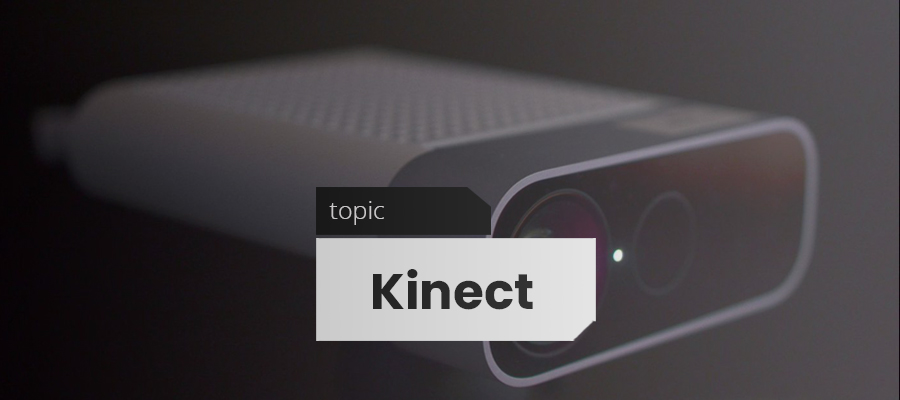Kinect is a line of motion sensing input devices that was produced by Microsoft for Xbox 360 and Xbox One video game consoles and Microsoft Windows PCs. Based around a webcam-style add-on peripheral, it enables users to control and interact with their console/computer without the need for a game controller, through a natural user interface using gestures and spoken commands.
The first-generation Kinect for Xbox 360 was introduced in November 2010 in an attempt to broaden the console’s audience beyond its typical gamer base. Microsoft released a beta version of the Kinect software development kit for Windows 7 applications on June 16, 2011, initially supporting the Kinect for Xbox 360 hardware connected to a PC for non-commercial applications. This SDK was meant to allow developers to write Kinect apps in C++/CLI, C#, or Visual Basic .NET.
A similar hardware version Kinect for Windows was released on February 1, 2012. The 1.0 version of the Windows SDK, allowing commercial applications, was released with and required the Kinect for Windows hardware.
Kinect for Xbox One, a new version with significantly expanded hardware capabilities, was released with the Xbox One platform starting in 2013. The corresponding Kinect for Windows v2 hardware was released in 2014, along with a supporting SDK. The 2.0 version of the Windows SDK supported the Kinect for Windows v2 as well as the Kinect for Xbox One hardware.
Microsoft announced the discontinuation of the first Kinect for Windows device as of 2015. The Kinect for Xbox 360 was discontinued along with the console by April 2016. The Kinect for Windows v2 was also discontinued in 2015, and customers were encouraged to use the functionally identical Kinect for Xbox One hardware with an adapter for Windows machines instead. The Kinect for Xbox One was discontinued in October 2017, representing the end of the Kinect product line.
Kinect for Xbox 360 was a combination of Microsoft built software and hardware. The hardware included a range chipset technology by Israeli developer PrimeSense, which developed a system consisting of an infrared projector and camera and a special microchip that generates a grid from which the location of a nearby object in 3 dimensions can be ascertained. This 3D scanner system called Light Coding employs a variant of image-based 3D reconstruction.
The Kinect sensor is a horizontal bar connected to a small base with a motorized pivot and is designed to be positioned lengthwise above or below the video display. The device features an “RGB camera, depth sensor and multi-array microphone running proprietary software”, which provide full-body 3D motion capture, facial recognition and voice recognition capabilities. At launch, voice recognition was only made available in Japan, United Kingdom, Canada and United States. Mainland Europe received the feature later in spring 2011. Currently voice recognition is supported in Australia, Canada, France, Germany, Ireland, Italy, Japan, Mexico, New Zealand, United Kingdom and United States. The Kinect sensor’s microphone array enables Xbox 360 to conduct acoustic source localization and ambient noise suppression, allowing for things such as headset-free party chat over Xbox Live.
On February 21, 2011, Microsoft announced that in spring 2011 it would release a preliminary software development kit (SDK) enabling researchers and enthusiasts to develop applications running on Microsoft Windows PCs. The beta version initially supported the Kinect for Xbox 360 hardware, connected to a PC, and only non-commercial applications were allowed. The first beta was released for Windows 7 on June 16, 2011. Beta 2 was released on the 1 year anniversary of Kinect for Xbox 360, on November 3, 2011.
The SDK included Windows 7 compatible PC drivers for Kinect device. It provided Kinect capabilities to developers to build applications with C++, C#, or Visual Basic by using Microsoft Visual Studio 2010 and included the following features:
- Raw sensor streams: Access to low-level streams from the depth sensor, color camera sensor, and four-element microphone array.
- Skeletal tracking: The capability to track the skeleton image of one or two people moving within Kinect’s field of view for gesture-driven applications.
- Advanced audio capabilities: Audio processing capabilities include sophisticated acoustic noise suppression and echo cancellation, beam formation to identify the current sound source, and integration with Windows speech recognition API.
- Sample code and Documentation.
The above is a brief about Kinect. Watch this space for more updates on the latest trends in Technology.
